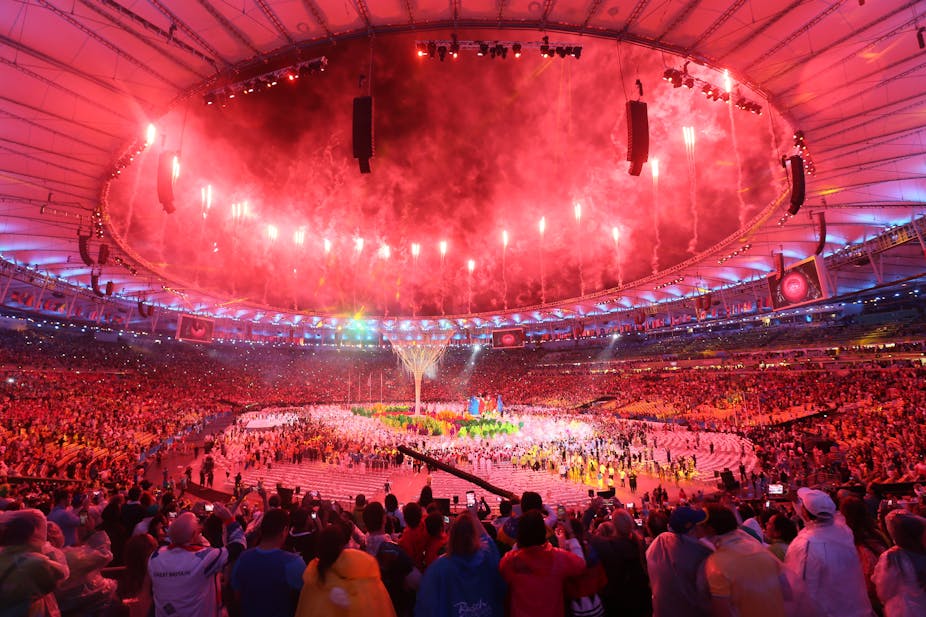The notion of what “legacy” is left after hosting an Olympic Games has become an obsession, to the extent that the need to leave a legacy is institutionalised: the Olympic Charter was amended in 2003 to make delivering a positive legacy for the host city and country a compulsory part of the contract. All cities vying to host the games are expected to clearly articulate their legacy plans if their bids are to be considered.
An Olympic legacy is the process of social construction that aims to forge changes in attitudes and behaviours among people and organisations. This is tricky, and generally contingent on all sorts of political, social and economic factors falling into place. Even then, establishing any real causal link between an Olympic Games and changes to people and places afterwards is notoriously difficult.
There has been a great deal of research into this process, and many “legacy frameworks” have been designed to capture the power of the Olympic Games to bring benefits to people, places, organisations and society in general. The most comprehensive of these is that of sports economist Holger Preuss, who identifies the tangible and intangible, planned and unplanned aspects of Olympic legacies. But Preuss’ work does not make clear the connection between the core mission of the Olympics and how the host city carries it out. The games themselves can change very little in how people see themselves and the world around them, so the focus should be on what can be realistically achieved through the three main instruments of Olympism: sport, education and culture.
However, for several reasons the legacy of the 2016 Rio Olympics will be difficult to describe and explain using these tools. First, Brazil is a huge, diverse and very unequal country – with a population of 200m people it is equal in size to Germany, Italy and the UK combined. Politically speaking, trying to use a sporting event to deliver social and economic changes within a federal country with a municipal, state and federal governments is always going to be complex and hotly contested.

The 2016 Rio Olympics also came at the point of transition between perceptions on what a legacy should be. The old model was concerned chiefly with delivering an Olympics by building major structures such as stadiums, with little attention to environmental costs and their use afterwards. For example, the Olympic Stadium from the 1976 Montreal Games cost an astonishing C$1.5 billion and wasn’t paid off until 30 years later. Similar cost overruns and poorly thought out planning for the future of facilities after the games can be seen at Athens in 2004 and Beijing in 2008, among many others where structures have fallen into disuse and disrepair.
The new approach is governed by the principles of sustainability, with four “pillars” of social, economic, environment and governance at its core. Sustainability was the central theme of Rio’s opening ceremony, expressed by the organisers through the idea of a “lean, fit and fun” Olympics. According to the 2016 Rio Olympics sustainability report, the city built fewer than a third of the necessary venues from scratch, with most Olympic competitions held in existing venues. This has never been achieved before.
As those watching the opening ceremony will have learned, the cost of the spectacle was a fraction – ten times less – than the extravagant £35m of public money spent by London for the opening of the 2012 Olympics. Brazil has pioneered the concept of “nomadic” architecture, in order to avoid leaving behind costly white elephants that are unused. For example, the Future Arena handball venue will be dismantled and used to construct four schools.
And despite 27 well-conceived and structured infrastructure projects that cover mobility, the environment, urban renewal and social development, the general view of the organisers is that the most important and lasting legacies will be intangible. These include hard-to-measure aspects such as boosting national pride and unity, raising people’s multicultural and environmental awareness.
Creating tangible benefits for all
Organisers and independent analysts disagree over what’s possible: the Brazilian government’s figures suggest direct economic benefits of US$11.5 billion between 2009-2016, while an independent analysis of Rio suggests that gains were concentrated in only a few sectors of the local economy, and did not justify the expenses incurred.
What’s tangible and more important is that hosting the Olympic Games has helped Brazil overhaul its elite sport system that was once rooted in the military – it is no accident that many Brazilian medal winners give a military salute from the podium – and transform it into civic organisations with proper elements of talent identification and specialisation. Brazil may not have achieved its plan to win between 27 and 30 medals (it won 19), but it invested a record US$600m in public and private funds to train athletes leading up to Rio, compared to US$350m in the previous four-year cycle.
Even if that alone is Rio’s legacy, perhaps it’s right that it is one that lays the foundations for building Brazil’s sporting legacies for the future. But Rio will also leave another contentious legacy for the Olympic movement: the attempts to ban an entire nation from participation in the games for the doping violations of a few athletes, a situation IOC president Thomas Bach has compared with returning to the days of the Cold War, during which sport was considerably politicised. This will also be an issue that is foremost for the Olympic and Paralympic movements to solve before Tokyo 2020.

